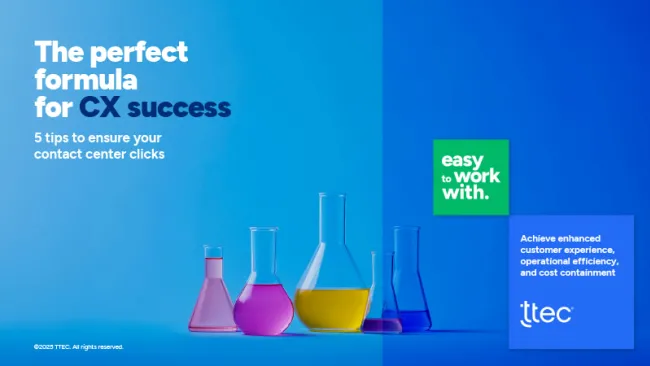Solutions. Value. Trust. Those are words that echo throughout Syngenta's operations. The agribusiness focuses its energy on building customer trust by offering proactive solutions for its customers around the world through crop protection, seeds, and lawn and garden management. In South Africa, trust comes in the form of potato protection.
"Our approach to working with our end-user customers, which for the most part are farmers, is to try to bring them a full 'solution' offer, [that is,] an integrated package of products and services," says Rob Neill, head of global marketing for Syngenta. "By integrating the components into a solution we can take a much bigger view of the customer's business, and it has enabled us to create a lot of value for them in terms of higher yields and crop quality. This approach is generally very high touch, which means that we work closely with our channel partners to help bring these offers to the grower."
The company's goal is to change the grower mind-set from short-term to long-term thinking. "For the customer, it's a simple formula," says Antonie Delport, managing director of Syngenta South Africa. "Profit equals your output less your input. If you increase the long-term output by more than what you put in [in the short term], then profit increases. With the data we illustrated that to the customer and the channel."
In South Africa, Syngenta's model is to work through 12 distributors with approximately 140 associates to provide growers with relevant products, such as pesticides and fungicides, to help manage their crops. In the past products were sold individually, with price as the primary competitive differentiator. But in 2005 the company decided to take a new approach to avoid commoditization. Instead of competing on price with individual products, the company wanted to offer proactive solutions designed to meet the specific needs of growers by region.
"Farmers were bombarded with a multitude of generic products from which to choose without understanding how each product interacted with and influenced the results of preceding or subsequent products," says Linda van der Merwe, product manager overseeing the PotatoPack program, adding that a structured, holistic program would deliver superior results because it would take into account the interactions of the different products in the program over the course of the growing season.
Syngenta plant pathologists, entomologists, and others worked with growers and distributors to understand potential threats of insects, climate, and blight on potato crops in different regions within the country. This led to the birth of the PotatoPack in 2006. Its product strategy became one of preventative, proactive solutions to meet specific customer needs, rather than a reactive, curative response.
Most of South Africa's 650 potato growers are industrial growers, van der Merwe says. They are information-hungry, results-oriented, and price sensitive. This new go-to-market strategy provides them with a scientifically developed, comprehensive program designed to meet their needs. "It's the result of more than 10 years' research and development work to offer a program in line with the plants' physiological properties combined with different products' chemical attributes to ensure the right product is used to target the pest or disease at the right time," van der Merwe says. "This offers the producer the peace of mind that resistance management is scientifically approached on his farm."
Syngenta created four different packs, each tailored to a specific region's pest and disease pressures, as well the length of its growing season. The pack contents differ depending on the attributes of the region, not specific producer attributes. It contains a combination of fungicides and insecticides to be used at different times throughout the growing season. Farmers simply spray their crops every seven days.
Syngenta's customer-focused approach goes beyond the bounds of what many firms would do for customers to truly deliver on its promise. For some of the pack elements, Syngenta actually uses its competitors' products to complete the solution. "Because we say we provide a full solution for customers, we can't leave any gaps," says Ian Mansfield, national business manager. "[The decision to use outside products] was driven by where we had gaps in our portfolio. We looked for the best product on the market to address a specific gap." However, more than 90 percent of each pack is made up of Syngenta products, he says.
Because a season's worth of products are packaged in a bundled, measured solution, growers purchase the entire pack at once in the beginning of the season. This was perceived as both a strength and a weakness when the packs first went to market. Distributors were nervous that customers would not spend so much money up front for an unproven system, and many growers had not budgeted that much money so early in the season. However, the positives quickly outweighed the negatives.
In the past growers would make decisions as the season progressed as to which products they needed. In many cases insects or blight had already attacked the crop. In some cases, distributors ran into inventory or delivery issues for mid-season orders. In other cases some distributors looked for only short-term gains and sold growers unnecessary products.
With the PotatoPack, farmers receive ?90 percent of their full product requirements at the start of the season, recommended by Syngenta and backed by research, not sold individually through sometimes dubious means, says Mansfield. In terms of logistics, farmers receive one main delivery and one invoice, which mean less hassle for the farmer and the distributor. "One pack is about 240 kilograms—three palettes of 80 kilograms—so one delivery makes it much easier," adds van der Merwe.
Syngenta's large-scale R&D trials confirmed the biological results of the program and the increase in yield before going to market with the pack. This was used to a great extent with the initial launch of the program. "The marketing promise is backed by statistical data," van der Merwe says. "We are not ?just interested in moving a can of product, but providing the grower with a trusted and implementable solution to crop protection that will help him bring his crop's 'plant potential to life.'" As farmers began to see results in their own crops, this helped build trust.
All in all, "it's a win-win-win" for Syngenta, the distributors, and the growers, says Mansfield. "We win with share of wallet, with the program we're promoting—our full go-to-market strategy that supplies a solution, not just a product in a can. The channel wins because they can plan requirements far easier, and the farmer gets an increase in yield and understands from the start of the season more or less how much he will pay to get a potential yield. We can't control the weather or change other aspects of his farming practices, but at least we can take charge of his crop protection and he can have more time to deal with other management issues."
Once a product is sold, some companies move on and that's the end of the relationship for the season. But part of Syngenta's solution-oriented approach includes ongoing training and education for distributors and farmers. For example, the company employees 12 full-time representatives who visit farms and shops to answer questions about the products and solicit feedback. "They visit producers at least once a week and will make specific recommendations for additional products to be sprayed if they experience disease or pest-prone weather," says van der Merwe, adding that the PotatoPack has been amended over the years to be more in line with customers' needs and to include new patented chemistry.
Growing benefits
The program has allowed Syngenta to change its internal culture and pricing strategy. In the past Syngenta had to compete on cost per liter per product, and often its channel partners looked for generic options and "cherry picked" the best prices. "Being able to move focus away from per liter price where a product has a lot of competition has increased share of wallet," says van der Merwe. "And because it's an encompassing program, the producer is locked into a Syngenta program for the season, keeping competitive products at bay."
Internally, what had been product silos are now collaborative teams, says Delport. "Now we're fully integrated through the creation of crop teams," made up of a crop manager, along with employees from sales, technical development, finance, and supply chain, he says.
Both growers and Syngenta have seen impressive results from the program. Growers have improved their crop yield an average of 20 to 30 percent, and see average profit improvements of 20 to 25 percent after factoring in the cost of the program. And according to Delport, the company's compound annual growth rate is 57 percent since the packs were introduced. Sales jumped from $500,000 in 2005 to $5 million in 2010. In addition, in 2006 the program served 2,900 hectares of land. In 2010 it had grown to 18,700 hectares, accounting for nearly 17 percent of South Africa's potato plantings.
Mansfield says much of this success comes from positive word of mouth among farmers. "There are so many situations in which we are outpriced, so it was a fight to show farmers the value [of the PotatoPack]," he says. "Once we did, and showed the data, now they're talking to each other about it. [The promotion] is now coming from them, not us."
Growth potential
Syngenta's proactive PotatoPack strategy is becoming its standard go-to-market strategy. According to van der Merwe, the PotatoPack will be upgraded in 2011 with two new patented chemistries to control late blight and potato tuber moths. In addition, Syngenta created a SynPack for corn/maize in 2004, a MangoPack in 2010, and is planning to release a WheatPack in 2011. "We are confident that our WheatPack will also deliver good future growth," says Abraham Vermeulen, marketing manager. "This pack is built on five years' worth of local research data and aims to deliver more profit through higher yields to farmers."
Syngenta is also looking to meet even more customer needs by expanding its reach among growers. "We are investigating the inclusion of [other] non-Syngenta products that will add value to the PotatoPack," says van der Merwe. "For example, in the Cape Province, the pack is used with great success combined with controlled-release fertilizer from a different supplier."
Customer focus and solution-oriented product strategy are also spreading to Syngenta's other regions around the world. "PotatoPack is a great best practice example, which has informed and inspired teams in other countries to move in the same direction," Neill says. "It can't always be directly copied, like in markets where the grower base is highly fragmented and personal selling to the end user isn't feasible. But it nevertheless provides excellent learning to build on."
Delport says the real strategy behind the program is customer centricity, which can be applied in any market. "Customer intimacy, knowing your customer, and addressing the needs of your customer [applies] wherever you get in contact with Syngenta globally."















